How Retinol Can Help With Pretty Much Every Skin Problem

Lobster-red skin, stinging sunburns, and flakey complexions have long been the stuff of retinol-use lore. So, it’s no wonder that some of us stay away from the stuff, thinking it’s too harsh. Dermatologists swear by retinol, counting it as a must-have for just about everyone (second only to SPF), even those with sensitive skin. And, research over the past 30 years has shown that retinol can tackle a ton of dermatological concerns, including acne, wrinkles, and rough or discolored skin. Not bad for a single active ingredient.
Related: This is What Female-Directed Porn Looks Like
“I don’t know a single dermatologist who doesn’t use a retinol product on their skin,” says Heather Rogers, MD, a Seattle-based dermatologist and clinical assistant dermatology professor at the University of Washington. “We’ve all read the studies and we all use it.” Before we dive in, you should know that there are three levels of retinoids: pure retinoic acid, which is the strongest and prescription-only; retinol, which is sold over the counter and is weaker and less irritating than the pure stuff; and retinol derivatives, which are also sold over the counter and are more gentle than retinol.
Related: Luxe Lashes Are One Click Away
It’s true; you might not completely avoid irritation if you use the stuff. But, you can minimize it by being strategic. For someone completely new to the world of retinol, Dr. Rogers suggests using a derivative twice a week to avoid stressing out the skin. If yours still reacts adversely, she recommends moisturizing beforehand. Once you’re comfortable with biweekly applications, you can increase the frequency until you’re comfortable with everyday use.
For some, the next step would be transitioning to a prescription concentration of retinoic acid. But, no matter what stage you’re in, don’t expect overnight results. While some research shows improved skin in as little as a month, Dr. Rogers says you should commit to a retinoid product for at least three months before judging whether or not it works for you.
Related: Glow International With These Asian Beauty Products
Read on for the non-prescription strategies to soothe your particular skin woes.
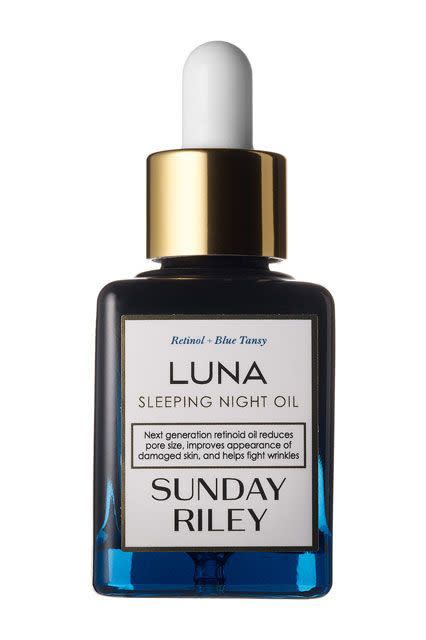
Dry Skin
The retinol in Luna is delivered via cold-pressed oil, which makes is hydrating and corrective.
Sunday Riley Luna Sleeping Night Oil, $105, available at Sephora.
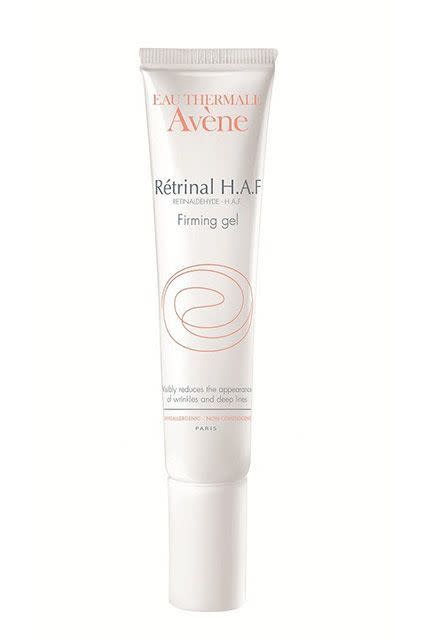
Photo via Avène.
Some non-prescription retinol products moisturize your skin with hyaluronic acid, an ingredient that keeps skin plump and hydrated.
Related: How to Grow Out Haircuts at ANY Length
Avène Eau Thermale Retrinal H.A.F. Firming Gel, $46, available at DermStore.
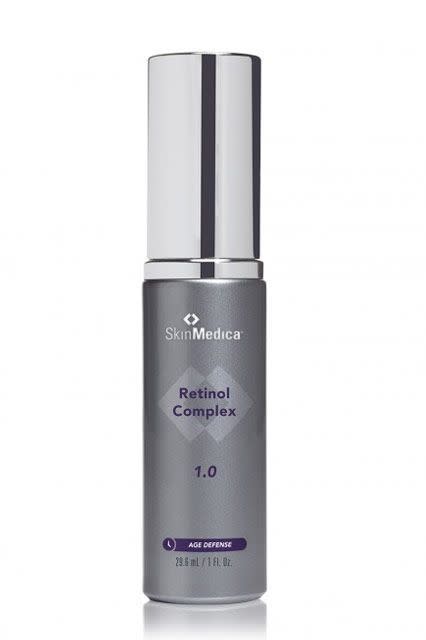
Photo via SkinMedica.
If your skin needs even more hydration, you can pair your retinol product with a heavier moisturizer — just apply the retinol first, which will help you absorb more of the hydrating stuff.
Related: Makeup You Can Actually Afford
SkinMedica Retinol Complex 1.0, $90, available at SkinMedica.
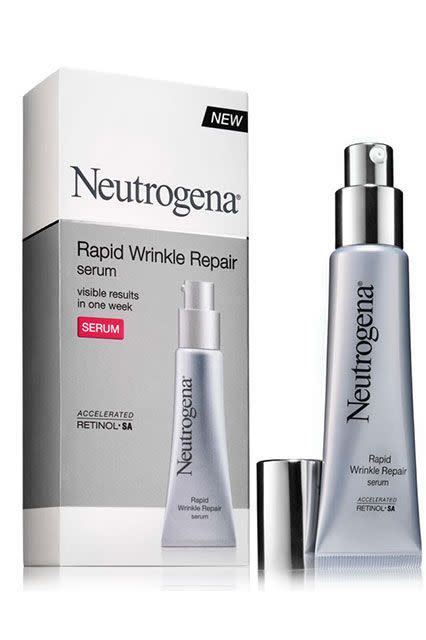
For a more affordable option, check out this serum from Neutrogena, which we think works just as well as the expensive stuff. The lightweight formulation contains retinol to brighten the skin and fade dark spots while hyaluronic acid provides an extra kick of hydration.
Neutrogena Rapid Wrinkle Repair Serum, $23.99, available at Ulta.
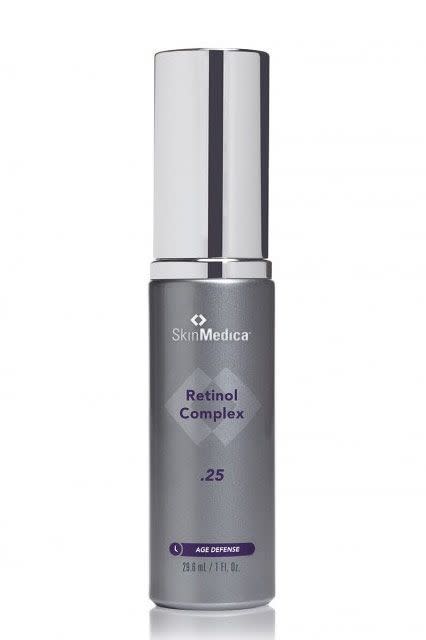
Photo via SkinMedica.
Hyperpigmented Skin
While you may be drawn to retinoid products with vitamin C, since they have pigment-fighting properties, Joshua Zeichner, MD, director of cosmetic and clinical dermatology research at Mt. Sinai Hospital in New York City, cautions against those. “Vitamin C and retinol can inactivate each other,” he says, so choose your products wisely. He suggests using a vitamin C serum in the morning to prevent further dark spots and a retinol product in the evening to repair damage.
Related: Fake a Facelift With These Cuts
SkinMedica Age Defense Retinol Complex .25, $60, available at SkinMedica.
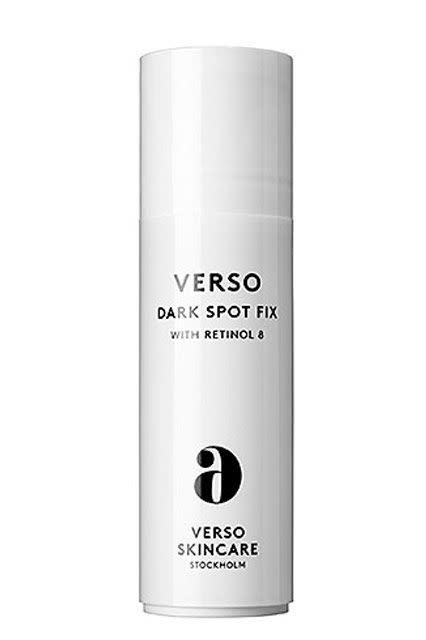
Dr. Rogers says those with hyperpigmentation should be particularly religious about their sunscreen use. “Retinol will help lighten the skin, but after five minutes in the sun, your body is going to make more brown,” she says. “So, you have to be incredibly diligent about limiting your exposure to UV, in addition to using retinol in the evening.”
Verso Dark Spot Fix, $150, available at DooBop.
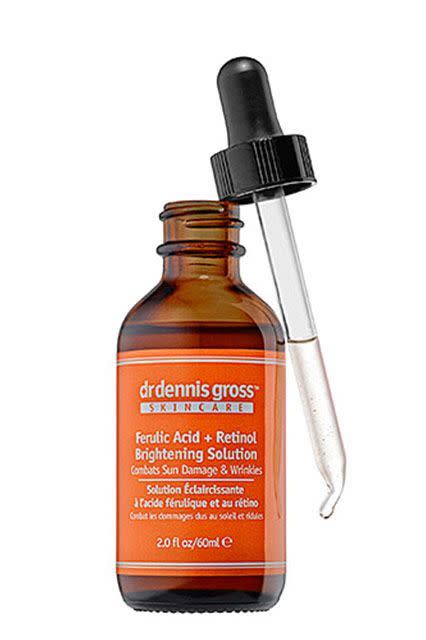
Photo via Dr. Dennis Gross.
Dull Skin
Even if your skin can tolerate a daily retinol dose, if you’re looking to brighten up your complexion, it may be best to take a few nights off. While retinol can help even out your skin tone and minimize wrinkles, it won’t necessarily slough off those dead, dulling cells. Dr. Rogers suggests alternating between a retinol product and a glycolic cream for your evening routine.
Dr. Dennis Gross Ferulic Acid + Retinol Brightening Solution, $88, available at Sephora.
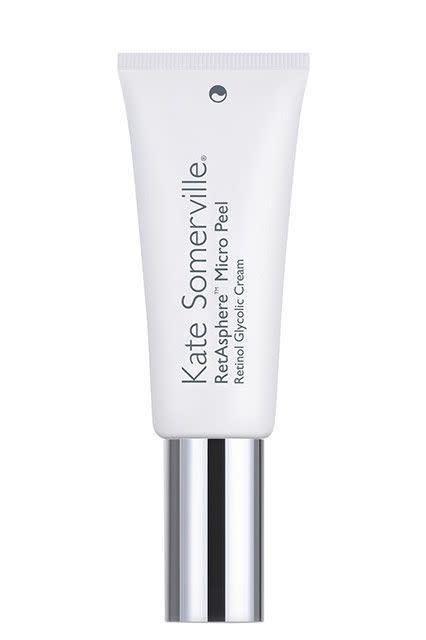
Photo via Kate Somerville.
A glycolic cream can help pull away dead skin cells and reduce the appearance of brown spots. Some new products on the market, like Kate Somerville RetAsphere Micro Peel, combine glycolic acid and retinol. To further brighten your complexion, Dr. Rogers suggests using a vitamin C serum during the day.
Kate Somerville RetAsphere Micro Peel Retinol Glycolic Cream, $90, available at Neiman Marcus.
For more retinol-related insight, visit Refinery29.
By: Erika Stalder
